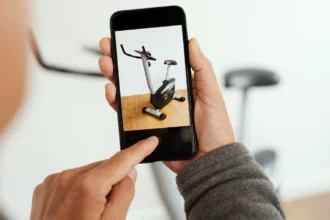When people open an app, they want it to feel like it was made for them. That doesn’t just mean the words are in their language. It means everything, the tone, layout, and flow, feels local and natural. This is how users stay engaged. They return because the app fits into their world.
A software translation agency may help you get the right words. But creating an immersive experience takes more than that. It needs thoughtful changes that match how people think, feel, and act in their own culture.
User Behavior Depends on Local Norms
Different cultures have different ways of using digital tools. In some regions, users scroll more and like to explore. In others, they prefer clear steps with fewer choices. Localization helps your app match these habits. You might need to shorten steps, change button placements, or adjust tap areas. These small tweaks help users feel more in control.
It’s not just about speed or flow. It’s about creating comfort. When an app works the way people expect it to, they trust it more. And that trust turns into more time spent inside the app.
Visual Elements Must Feel Familiar
Colors and icons carry meaning. A red button may feel urgent in one culture but offensive in another. A thumbs-up icon may signal approval in one place but seem rude somewhere else. Localization checks these signs. It helps you redesign icons, choose better images, and adjust layout styles. These changes may seem small, but they remove friction.
When your visual choices match what people are used to, they don’t have to think twice. They act fast, feel relaxed, and stay focused on your content.
Tone of Voice Makes the App Feel Human
Words are more than information. They carry feelings. The same message can sound helpful in one place and cold in another, depending on tone. Localization helps you adjust tone based on cultural norms. Some users prefer direct, clear wording. Others expect a softer, more polite style. Even help messages, success alerts, or error texts matter. If they sound right, users stay calm and feel supported. This emotional match is key to making the app feel like a friend, not a machine.
Immersion Requires Cultural Touchpoints
Immersive experiences rely on connection. And connection often comes from local culture, references, dates, humor, and even values. For example, a fitness app might include a popular local sport. A food app may use regional dishes in examples. These small touches make the user feel seen. Localization helps you find and add these moments. It’s not about making the app flashy. It’s about giving the user a sense of place, belonging, and recognition.
Onboarding Must Reflect Local Logic
The first few screens of an app matter the most. They set the tone and help users decide if they want to continue. In some places, people like a short tour. In others, they prefer a full tutorial. Some want text guides. Others want swipes and icons. A good app localization agency helps you test and build onboarding that suits each region. This gets users comfortable faster. And once they’re comfortable, they stay.
User Feedback Improves Localization
Reviews, chats, and support tickets tell you what users love or struggle with. But only if you understand the local language, and how it’s used. Localization teams help you read between the lines. A short review in one country may be highly praised. In another, it may signal confusion.
You can use this feedback to keep improving. If users in one region keep skipping a step, maybe it needs to be clearer. If they repeat a question, maybe the label needs better wording. Localization is not a one-time job. It’s ongoing work that listens, learns, and improves over time.
Notifications That Feel Timely and Friendly
Push alerts are a big part of app use. But they must feel natural and helpful. Some users like early morning reminders. Others want messages at night. In some places, a playful tone works. In others, people expect a more serious style. Localization helps you get this right. You can test what time gets the best response. You can tweak the message tone for each group. The result? More taps, more sessions, and fewer uninstalls.
Payment and Currency Must Be Easy
If your app handles purchases, the checkout process must feel simple. But simple means different things in different places. One country might prefer monthly pricing. Another might need prepaid options. The way people enter numbers, choose currencies, or apply codes can also vary.
Localization helps make this smooth. You can show the right payment tools, use the right tax terms, and display currency the local way. This makes users feel safe. And safety turns into completed purchases.
Dates, Units, and Formats Must Match
Time, weight, and distance are often shown in different ways around the world. If your app tracks activity, maps, or tasks, this matters. A user might be confused if they see “12/07” and don’t know if it’s December or July. Or if they see “km” instead of “miles.” Localization helps you show the right format in every region. It prevents confusion and helps the app feel smart and respectful of local habits.
Seasonal and Event-Based Changes Keep Apps Fresh
Holidays differ by country. So do school breaks, national days, and peak times. Localization helps you plan updates around local events. You can change banners, add special offers, or even redesign parts of your app for a short time. This shows users that your app is active and aware. It also helps you join local moments, and become part of people’s lives.
Final Words
Apps today are more than tools. They are part of daily life. And like anything personal, they must feel right to the user. When you localize with care, your app becomes more than just usable. It becomes enjoyable. It matches how people think, act, and feel. It becomes something they trust. Immersion is not about adding fancy features. It’s about fitting into someone’s world. And when you do that, users stay, engage, and share your app with others. Let your app speak like a local. That’s how you grow, one experience at a time.

















